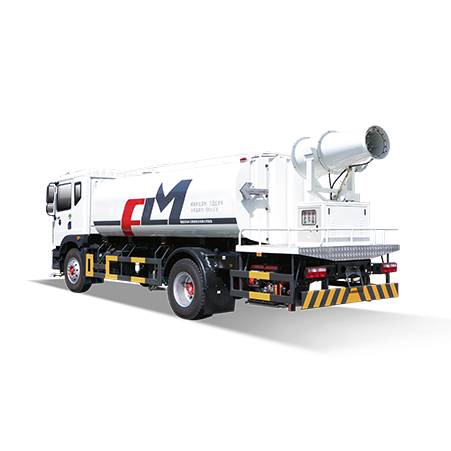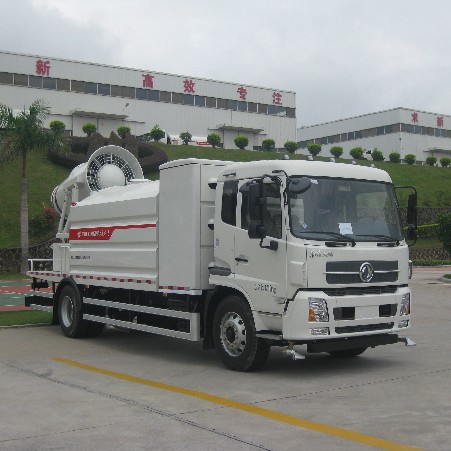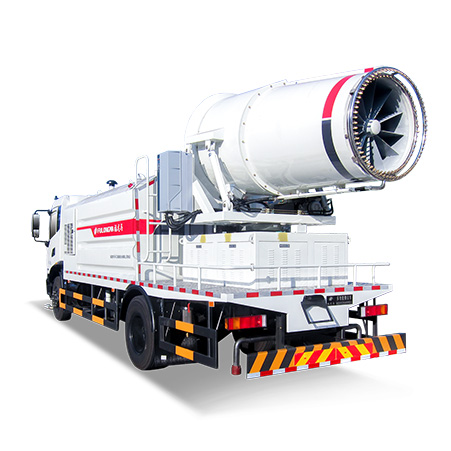Imagine driving down a busy highway, your visibility suddenly dropping to near zero as a thick cloud of dust engulfs your car. This isn’t just an annoyance—it’s a real danger.
Dust control on roads is more than just a matter of keeping things looking tidy. It’s a critical component of public health, safety, and environmental stewardship. Uncontrolled dust can exacerbate respiratory conditions, obscure visibility lead to accidents, and harm local ecosystems. As our urban and rural areas expand, managing road dust is an ever-growing challenge that requires innovative solutions and dedicated efforts.
In this article, we will delve into the world of dust suppression vehicles, exploring their types, how they operate, and the vital role they play in maintaining clean and safe roadways.

What are Dust Suppression Vehicles?
Dust suppression vehicles are specialized machines designed to reduce and control the amount of dust generated on road surfaces. These vehicles are equipped with various technologies to spray water, chemicals, or other substances that prevent dust particles from becoming airborne. They are essential tools for maintaining air quality and ensuring safer driving conditions.
Types of Dust Suppression Vehicles
- Water Trucks: The most common type, these vehicles spray water onto road surfaces to keep dust particles settled. They are simple, cost-effective, and widely used in both urban and rural settings.
- Chemical Spray Trucks: These vehicles use specialized chemical suppressants that bind dust particles together, making them heavier and less likely to become airborne. They are often used in areas where water conservation is a priority.
- Multi-Purpose Vehicles: These advanced machines can switch between water and chemical sprays, offering flexibility depending on the area’s environmental conditions and specific needs.
- Innovative Dust Control Vehicles: Equipped with cutting-edge technology, these vehicles use methods like electrostatic dust collection or biodegradable polymers to manage dust more sustainably and efficiently.
The Importance of Dust Suppression

Health Implications
Inhaling road dust can lead to serious health issues, especially those with preexisting respiratory conditions like asthma or chronic obstructive pulmonary disease (COPD). Dust particles can carry harmful pollutants and allergens, contributing to poor air quality and triggering respiratory problems.
Environmental Impact
Dust can damage local ecosystems by covering vegetation, which inhibits photosynthesis and can lead to plant death. This in turn affects wildlife that depend on these plants for food and shelter. Additionally, dust runoff can contaminate water sources, harming aquatic life.
Safety Concerns
Dust clouds reduce visibility on roads, increasing the risk of accidents. For drivers, encountering a dust cloud can be as dangerous as driving in heavy fog, as it can obscure obstacles, other vehicles, and road signals.
Mechanisms of Dust Control

Water-Based Methods
Water is the simplest and most widely used method for dust suppression. Trucks equipped with large tanks and spraying mechanisms distribute water over the surface, effectively weighing down dust particles.
Chemical Suppressants
Chemicals like calcium chloride and magnesium chloride are popular due to their hygroscopic nature—they attract and retain moisture, which helps keep the dust particles bound to the road surface. These chemicals can be more effective and longer lasting than water alone.
Dust suppression vehicles play a crucial role in maintaining clean, safe, and healthy roads. From simple water trucks to advanced vehicles employing innovative technologies, these machines are essential for controlling road dust, thereby protecting public health, enhancing road safety, and preserving the environment. As our understanding of dust control improves, so will the technologies and methods we use to keep our roads dust-free.
FAQs
What is the main purpose of dust suppression vehicles?
Dust suppression vehicles are designed to control and reduce the amount of dust generated on road surfaces, improving air quality and road safety.
How often do dust suppression vehicles need to operate?
The frequency of operation depends on environmental conditions, road usage, and the type of suppressant used. In dry, dusty conditions, the daily application might be necessary.
Are chemical suppressants safe for the environment?
Most chemical suppressants are formulated to be safe for the environment, though their impact depends on the specific chemical used. It’s important to use environmentally friendly options whenever possible.
Can dust suppression vehicles operate in all weather conditions?
Yes, they are designed to operate in various weather conditions, though their effectiveness might vary. For example, water-based methods are less effective in extremely hot, dry weather.
What are the latest innovations in dust suppression technology?
Innovations include biodegradable polymers, electrostatic dust collection methods, and the use of nano-particles, all aimed at providing more effective and sustainable dust control solutions.






